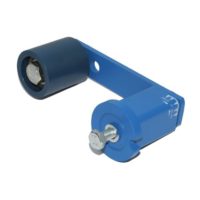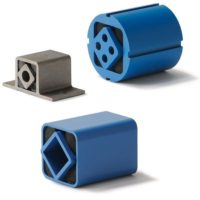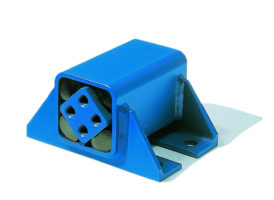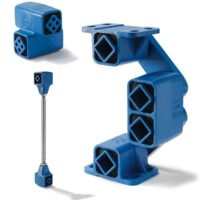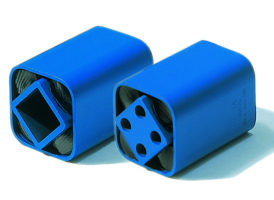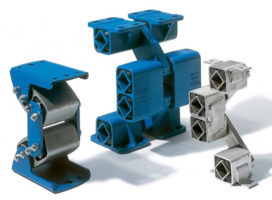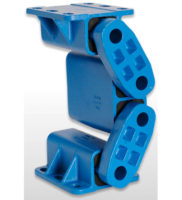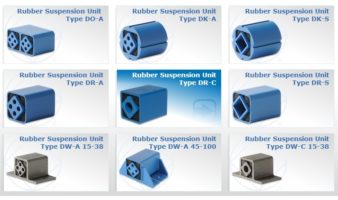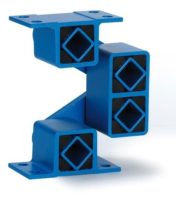
3.7
Anti-vibration Mounts
3. Active and Passive Isolation
Active or direct isolation
(fig.
6
) means the direct ab-
sorption of oscillations, vibrations and shocks of a running
machine by anti-vibration mounts, i. e. to prevent
directly
the transfer of the numerous machine vibrations into the sub-
structure, basis frame and entire building. For the anti-vibra-
tion mount selection the knowledge of the interfering fre-
quency (
disturbance frequency
), the stiffness of the
machine structure and its gravity center as well as of the
specific machine location in the building is required.
Active
isolations are usually
overcritical
machine installations on
anti-vibration mounts (e. g. on ROSTA ESL mounts).
Passive or protective isolation
(fig.
7
) means to in-
stall a protective barrier between all kind of existing vibra-
tions and shocks occurring in a factory or workshop towards
sensitive installations like e. g. weighing and measuring in-
struments, laboratory equipment or electronic control units.
The vibration technological situations usually vary in each
case and are related to environmental situations, too. Often
shocks and impacts come from outside, e. g. from motor-
ways, railways, building sites or tooling machines, like
punching presses, etc. Generally, the sensitive equipments
shall be protected by installing them on rather “soft” anti-vi-
bration mounts, e. g. ROSTA ESL or AB-D mounts absorbing
most of these environmental impacts. It is frequently recom-
mendable to consult also an engineering company having
the tools and instruments to analyse the specific vibration
appearances.
Protective suspension mounts
for e.g. tooling ma-
chines are usually rather “hard” and show only little deflec-
tion under load. Too soft tooling machine mounts could actu-
ate bending of the machine base what would influence neg-
atively the precision of the work piece machining. Therefore,
mounting feet for tooling machines are often consisting of
hard rubber cushions deflecting only a few millimetres under
load, but “shield” all combined vibration and shock appear-
ances from the sensitive precision machine. Transmitted
shocks and vibrations could affect the clean surface finishing
of the work piece. Of course, in the interest of the fully hori-
zontal positioning of the tooling machines, these anti-vibra-
tion mounts have to dispose of a levelling jackscrew with
spherical joint for the compensation of the possible floor
unevenness (e. g. ROSTA N or NOX mounts).
Active isolation
6
Passive isolation
7



